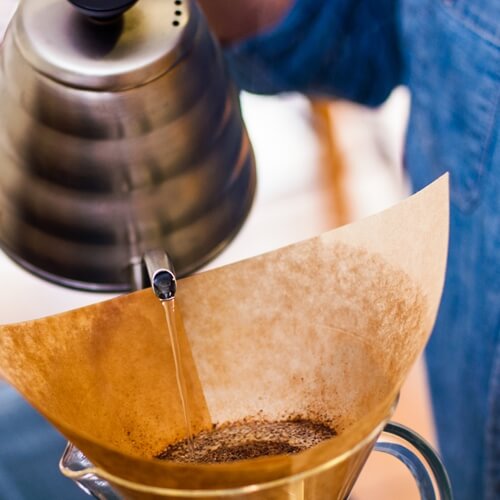What is the deal with pour-over?

If you have been hanging around any coffee shops lately, or have friends that do, you are likely to have caught wind of the latest brewing trend. Known as pour-over, this trendy coffee-making method is completely manual, allowing the barista to have total control over all aspects of the brewing process. For this reason many independent and specialty coffee purveyors have been convinced to make the switch as they can highlight the unique characteristics of each roast. But it isn’t just the vendors who are moving in the direction of pour-over. Many home brewers have found the process preferable to traditional machine-centric techniques. The term “pour-over” actually refers to a range of methods and techniques that all share the characteristic of being completely manual techniques.
Devices
There are a number of contraptions that fall under the “pour-over” umbrella. They are all notable for containing no mechanized parts and being slow, albeit not all that much slower than your average drip coffee machine. The reason for the delay is that these devices work on a principle of gravity. The only force pulling the hot water through the grounds and the filter is that of gravity. Thus, the finer the ground or filter, the longer it is going to take for the water to get through. This long extraction process allows more of the beans’ flavors to seep into the water, resulting in a more flavorful brew.
Some of the most popular pour-over devices include:
- Chemex: This system is easily recognized by the beautiful glass decanter that the coffee is brewed into. A cone with a paper filter and coffee grounds is placed on top of this decanter and hot water is slowly poured on top.
- Woodneck: Similar to the Chemex, the Woodneck system brews coffee into a glass decanter but uses a cloth filter instead of a paper one. Filters made of cloth are highly regarded alternatives to paper filters as they don’t impart any papery taste to the brew.
- Walker: This is actually an old German design that has recently come back into vogue. It is made completely out of porcelain and requires no extra filters. However, since it is constructed of porcelain, it must be thoroughly pre-heated by running hot water through the entire system before use.
Since many aspects of the brew are under your control when making pour-over coffee, it is important to gain as much practice as possible. Don’t be discouraged if the coffee isn’t perfect on the first go, it often takes some tweaking of the grounds, water to coffee ratio and dose to get the perfect cup.


